Today I woke up at 5:30am so I could accompany Nilda at her yearly dye day at Sallac, a village south of Cusco. Very few things other than natural dyes could get me out of bed at that hour. We drove the hour and a half to Sallac, the last half hour of which was spent on the above mentioned switch backs, working our way from the bottom to the top of a mountain. We got there and it was the most organized dye anything I've ever seen. The yarn was already scoured and sorted by color, the stoves were lit and water was already boiling, they dyes they had were already in their pots, clotheslines were hung, sticks were positioned next to their vats, and all the weavers were present. We unloaded and began immediately.
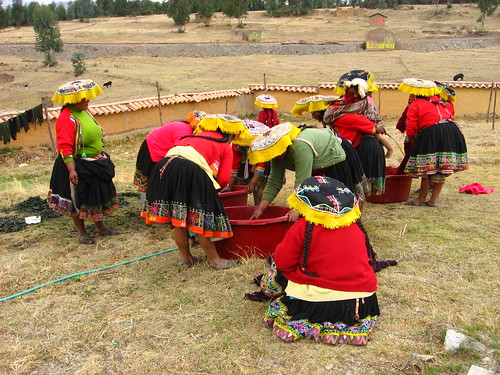
Today we did 12 dye vats:
Q'uolle
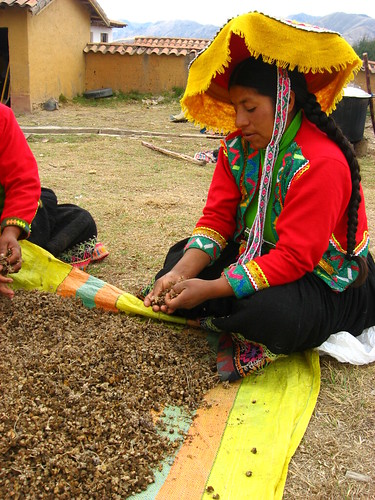
A flower dye that gives yellows. When combined with a Cochineal exhaust bath, you get deep golden yellows.
Fire Scarlet Cochineal- Using the yellow dyed yarn and the 1st yellow vat, you add red cochineal to the vat after straining out the flowers. Then you re-add the yellow yarn, as well as Alum and Citric acid to get a really beautiful true red.
Lichen
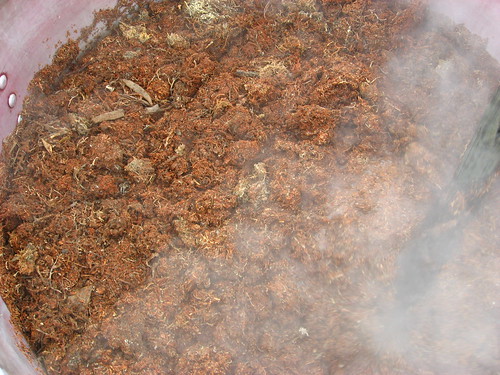
Lichens here grow on the cliff faces, and give rusty copper browns
**note: we were using low-altitude lichens today. high altitude lichens give slightly different colors
Palo-Palo
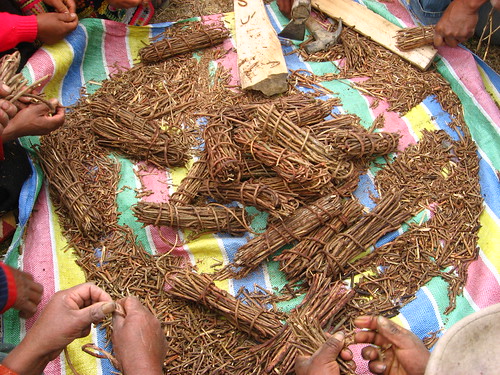
A twig that is bundled and dried, and then chopped roughly into small pieces before dyeing. It gives pretty peach/salmon colors (Durasno).
Awaypili

A purple leave that is dried and then dyed with. By itself, it give a medium to dark blue-purple.
Red-Purple Cochineal- The yarn is dyed first in a awaypili vat, the leaves are strained out of the water and shaken from the yarn, and the cochineal is added to the dye water. The yarn is re-added with Alum and Citric acid to achieve really dark warm purples.
Burgundy Cochineal
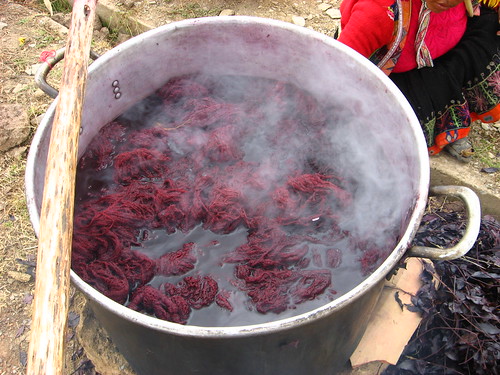
Cochineal on white yarn with citric acid and alum. With no color modification from other vats, the color is less true red as it has a little pink/purple in it.
Chilq'ua
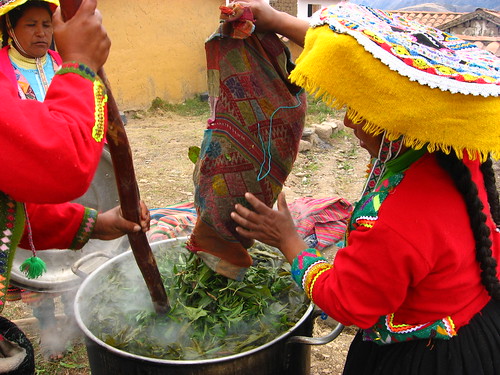
A shrubby leafy plant that grows everywhere in the mountains, on hill sides and along the sides of the roads. The leaves are long and narrow and are used fresh for dyeing. They give beautiful middle greens, and with the addition of Cupric Sulfate (found in the volcanic rock here) they give dark greens and olives.
Chilq'ua/Q'uolle mix- gives a "limon green" as they say here, which by that they mean the green of the peel of a lime.
Q'uolle + Cochineal exhaust vats- give either golden yellow or orange depending on the ratio of dyestuffs.
Other than dyeing, I was lucky enough to be taken out to their 4 Prickly Pear Cactus sites around the village. They are growing them with the intention of trying to start a Cochineal insect crop, and as they the community furthest south, they're potentially warmer than the rest. The cacti were really cute and had little new growth buds along their tops like crowns. While we were out, they showed me what Chilq'ua and Q'uolle looked like as plants, which was cool too.
The Prickly Pear Cactus
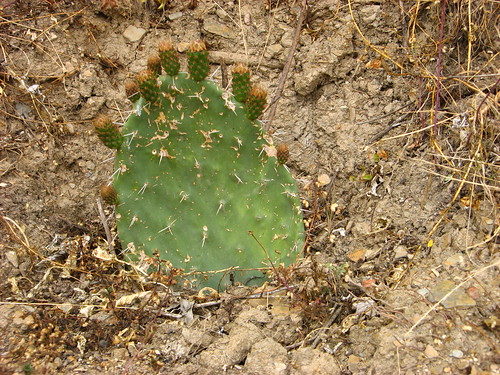
The Q'uolle
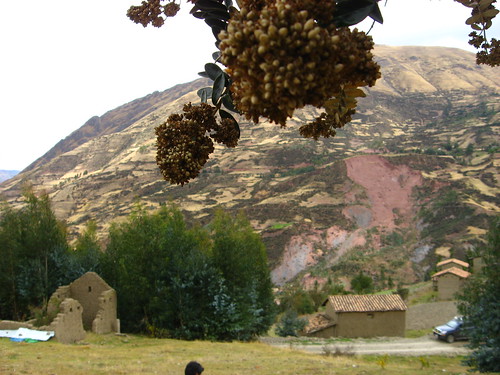
We were basically finished with the dyeing by the time lunch rolled around. Lunch was a little embarrassing, because the 4 of us in Nilda's party were treated as "honored guests" and therefore were served our soup first and given bigger portions of meat than anyone except the village elders. Nilda and I agreed it was an awkward position to be in, but it's rude not to eat it and who would you share it with if you could?
After lunch, we rinsed anything we'd left cooking during lunch, cleaned all the pots and tubs, sorted the yarn, packed up, and drove home. Got back around 4pm, exhausted and stuffy from the campfire smoke, but I wouldn't have traded it for anything.

**NOTE: Sallac is one of the only villages in the area that uses Ikat. A bunch of what we dyed were tied Ikat warps. I'm always really excited to see these weavings in the Center's shops, because it's really rare here.
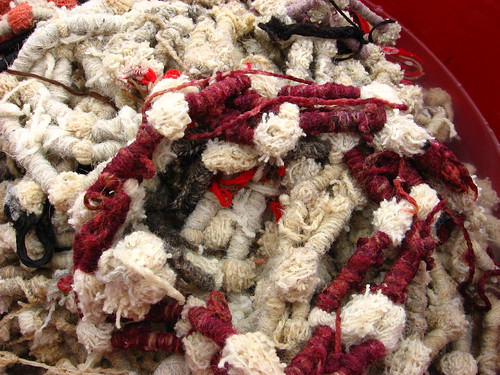

No comments:
Post a Comment